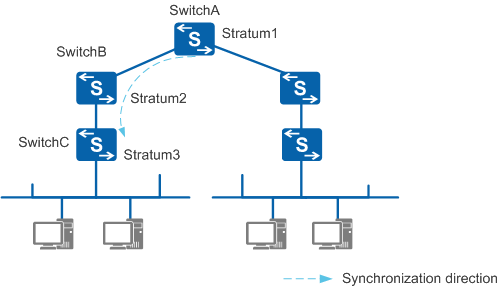Configuring an NTP Primary Clock
Context
The clock of a network device can be synchronized using the local clock or by using the clock of another network device as a reference clock.
If both methods are enabled, the device selects the optimal clock source by selecting the clock with the lower stratum.
For a synchronization subnet, an authoritative clock is used as a reference time source and is at the top of the synchronization subnet hierarchy. The authoritative clock is stratum0. The current authoritative clock is typically a radio clock or GPS. The authoritative clock is synchronized through the broadcast Coordinated Universal Time (UTC) time code rather than NTP.
In typical applications, the NTP server synchronized with the authoritative clock is set as stratum1. The NTP server is used as the master reference clock source if the local clock of the NTP server is configured as the NTP primary clock. The stratum of the clock on a network device is determined by its NTP distance to the master reference clock source. Typically, this distance is determined by the number of NTP servers which compose the NTP synchronization chain.

When the local clock is configured as the reference clock, the local device clock can be used to synchronize other device clocks on the network. Ensure there are no conflicts with this configuration to avoid network errors.
